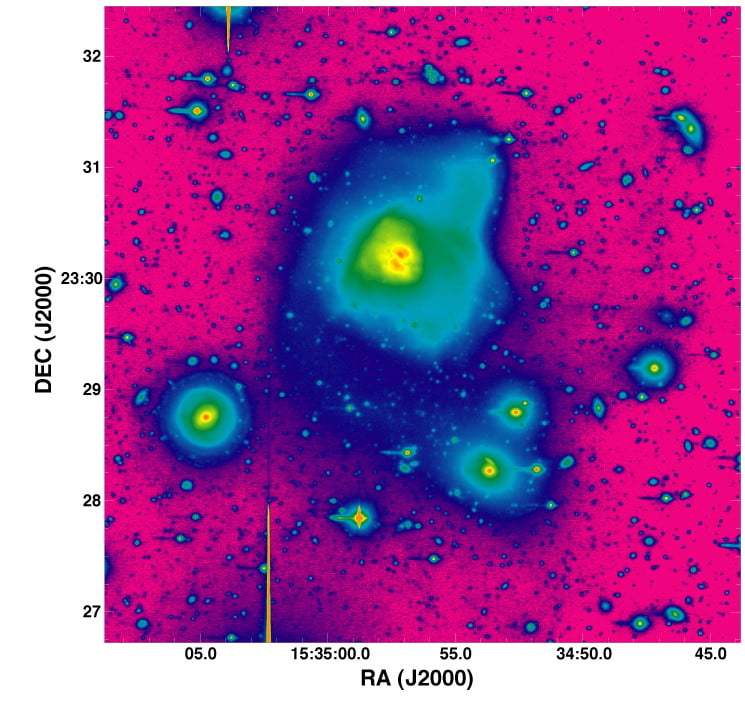Acting like CSI sleuths, astronomers have been able to unravel the history of galactic collisions from new images of the Antennae galaxies, Arp 220, Mrk 231 in the Big Dipper and 10 other well known colliding galaxies. "The new images allow us to fully chart the orbital paths of the colliding galaxies before they merge, thus turning back the clock on each merging system," says Dr. Nick Scoville from Caltech. "This is equivalent to finally being able to trace the skid marks on the road when investigating a car wreck."
Using the Subaru telescope on Mauna Kea in Hawaii, a team of astronomers took extremely deep images of several colliding galaxies which revealed tidal debris being stripped away as a result of the collisions. The debris offers clues to the full history of galaxy collisions and the resulting starburst activities. But the extent of the debris had not been seen in earlier images of these objects.
"We did not expect such enormous debris fields around these famous objects," says Dr. Jin Koda, Assistant Professor of Astronomy at Stony Brook University. "For instance, the Antennae -- the name came from its resemblance of insect 'antennae' -- was discovered early in the 18th century by William Herschel and has been observed repeatedly since then."
Colliding galaxies eventually merge and become a single galaxy. When the orbit and rotation synchronize, galaxies merge quickly. So, new tidal tails indicate quick merging, which could be the trigger of starburst activities in Ultra Luminous Infrared Galaxies (ULIRGs). Where there is no debris, that indicates the galaxy merger was slow.
[caption id="attachment_32254" align="aligncenter" width="580" caption="Arp 220. Credit: Subaru Telescope"]
[/caption] "Arp 220 is the most famous ULIRG," says Dr. Taniguchi, who is a Professor at Ehime University in Japan. "ULIRGs are very likely the dominant mode of cosmic star formation in the early Universe, and Arp 220 is the key object to understand starburst activities in ULIRGs."
"Subaru's sensitive wide-field camera was necessary to detect and properly analyze this faint, huge debris," he said. "In fact, most debris are extended a few times bigger than our own Galaxy. We were ambitious to look for unknown debris, but even we were surprised to see the extent of debris in many already famous objects."
Galactic collisions are one of the most critical processes in galaxy formation and evolution in the early Universe. However, not all galactic collisions end up with such large tidal debris.
"The orbit and rotation of colliding galaxies are the keys," said Koda. "Theory predicts that large debris are produced only when the orbit and galactic rotation synchronize each other. New tidal debris are of significant importance since they put significant constrains on the orbit and history of the galactic collisions."
The team plans further studies and detailed comparisons with theoretical models which they hope may reveal the process of galaxy formation and starburst activities in the early Universe.
Source: AAS,
PhysOrg
 Universe Today
Universe Today
